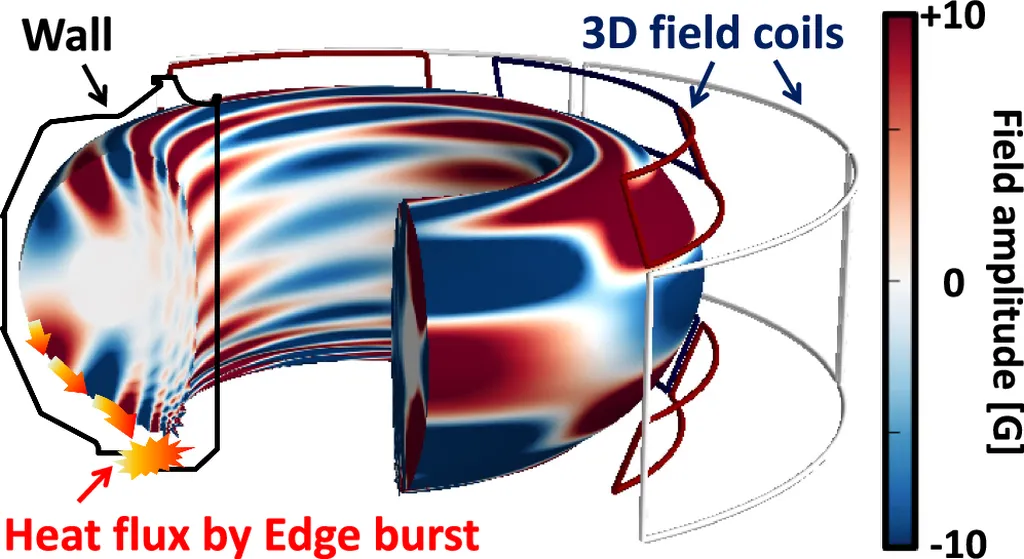In the quest for cleaner and more efficient energy, scientists are constantly pushing the boundaries of what’s possible. A recent study published in the journal *Nuclear Fusion* (translated from the original title) has shed new light on how resonant magnetic perturbations (RMPs) can significantly reduce tungsten radiation in tokamaks, a type of device used in nuclear fusion research. This breakthrough could have profound implications for the energy sector, particularly in the development of fusion power, a potentially limitless and clean energy source.
The study, led by Z.H. Gao from the Key Laboratory of Materials Modification by Laser, Ion and Electron Beams at Dalian University of Technology, China, focused on the Experimental Advanced Superconducting Tokamak (EAST). The researchers observed a remarkable 70% reduction in tungsten radiation intensity under RMP fields. To understand this phenomenon, they conducted integrated modeling using a suite of advanced codes and frameworks.
“Our findings indicate that the enhancement of perpendicular transport in the three-dimensional scrape-off layer (SOL) is the dominant contributor to the suppression of tungsten accumulation by RMP,” Gao explained. This means that the RMP fields are altering the way impurities like tungsten move and distribute within the tokamak, preventing them from accumulating and radiating excess energy.
The implications of this research are significant for the energy sector. Fusion power, which mimics the process that powers the sun, has the potential to provide nearly limitless energy without the harmful emissions associated with fossil fuels. However, one of the major challenges in achieving practical fusion power is managing the impurities that can cool the plasma and reduce the efficiency of the reaction.
By understanding how RMPs can mitigate tungsten radiation, scientists can develop more effective strategies for impurity control in future fusion reactors. This could accelerate the development of commercial fusion power, bringing us one step closer to a clean energy future.
The study also highlights the importance of integrated modeling in advancing our understanding of complex physical phenomena. By combining experimental observations with sophisticated simulations, researchers can gain deeper insights into the processes at play and develop more accurate predictive models.
As the world grapples with the urgent need to transition to sustainable energy sources, research like this offers a glimmer of hope. The findings not only advance our scientific understanding but also pave the way for technological innovations that could revolutionize the energy sector.
In the words of Z.H. Gao, “This work offers valuable insights into the mechanisms of impurity control on EAST, which could be crucial for the development of future fusion reactors.” With continued research and innovation, the dream of clean, abundant fusion power may soon become a reality.

